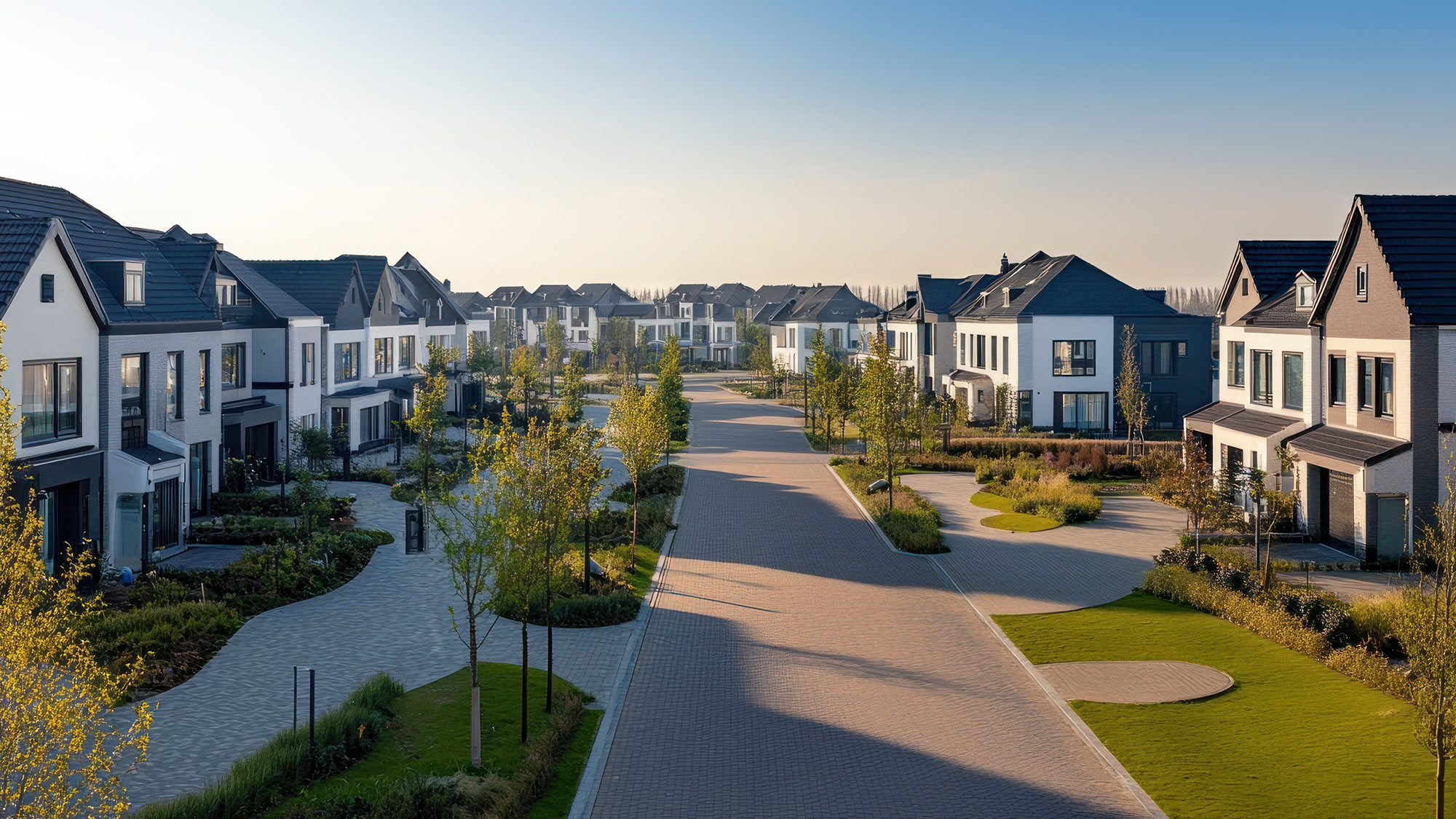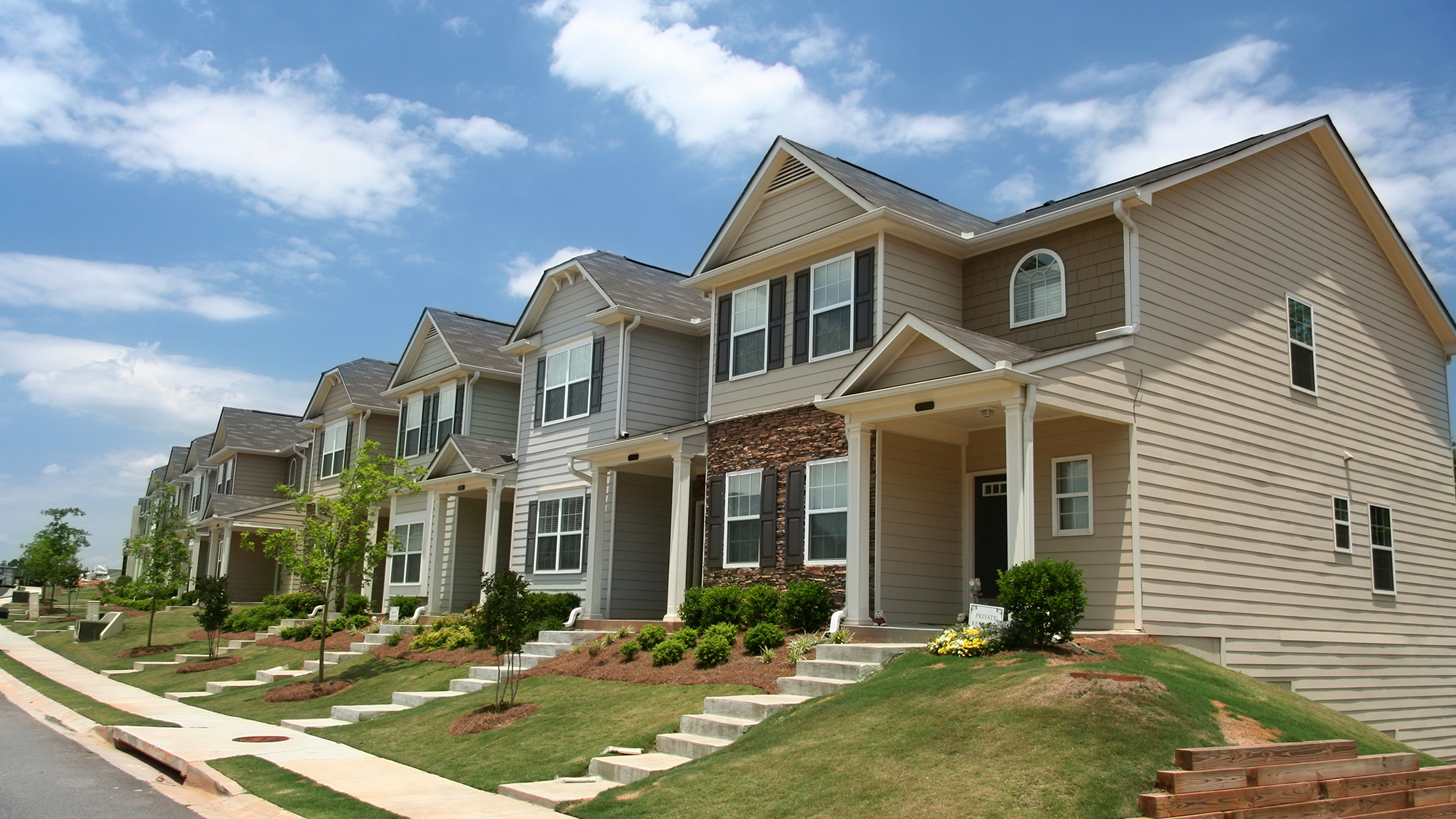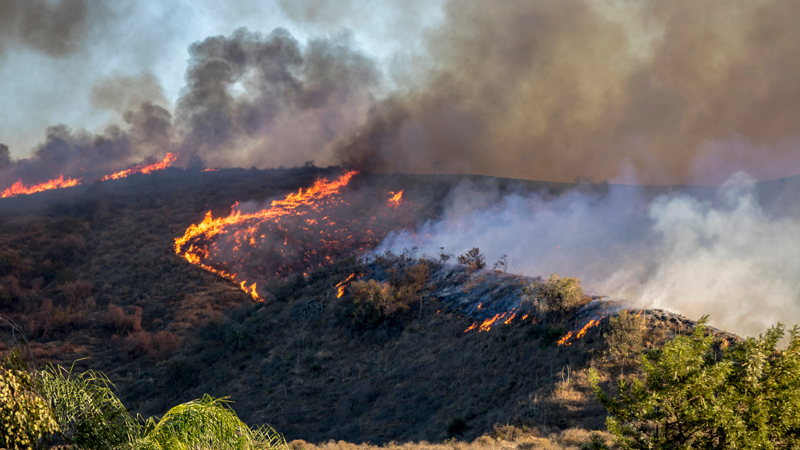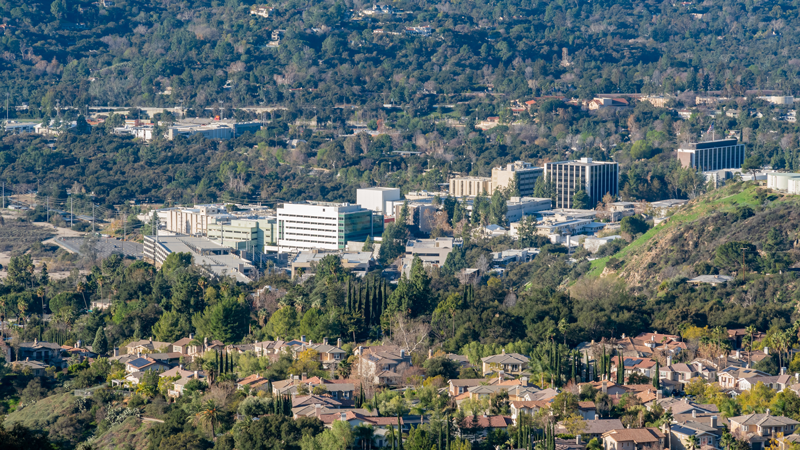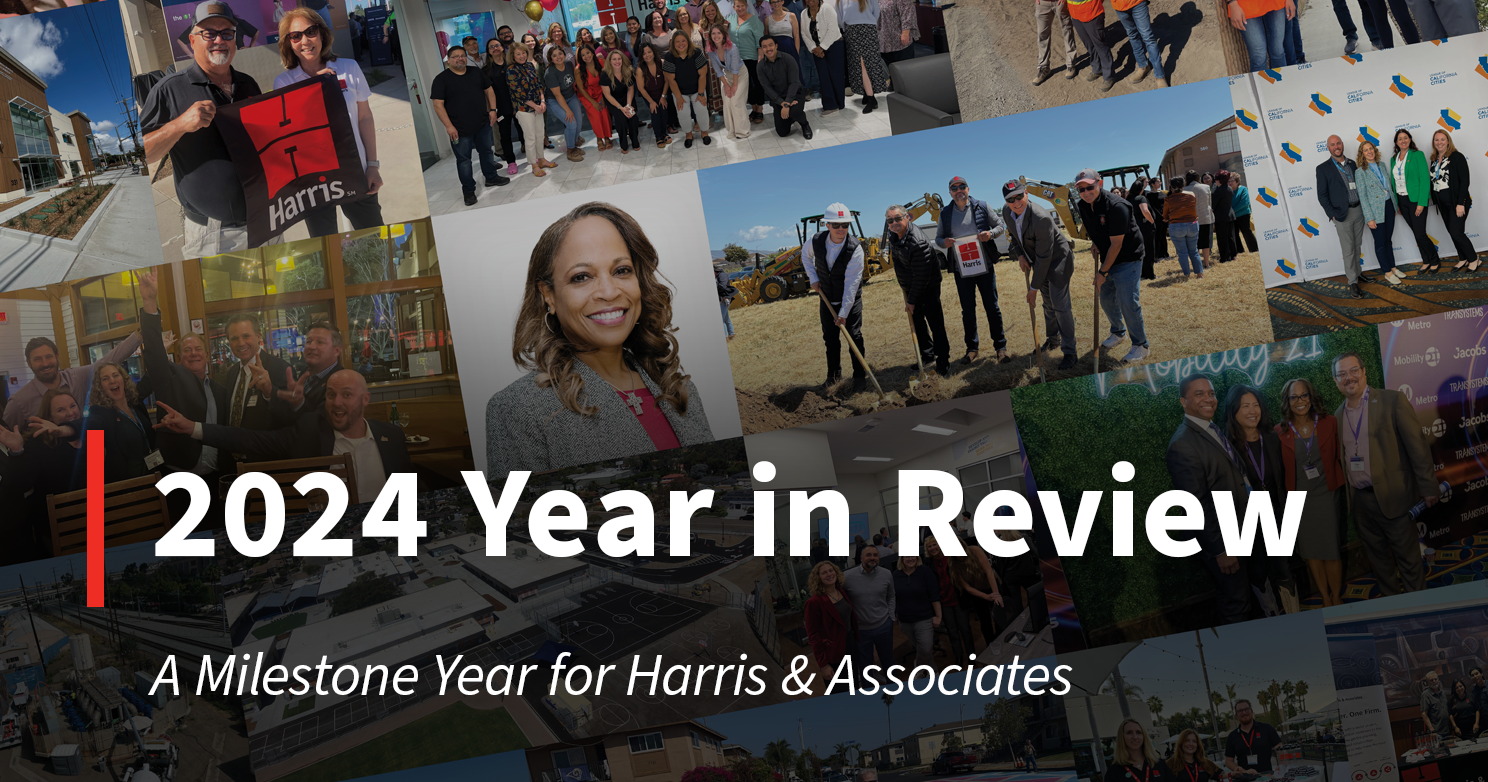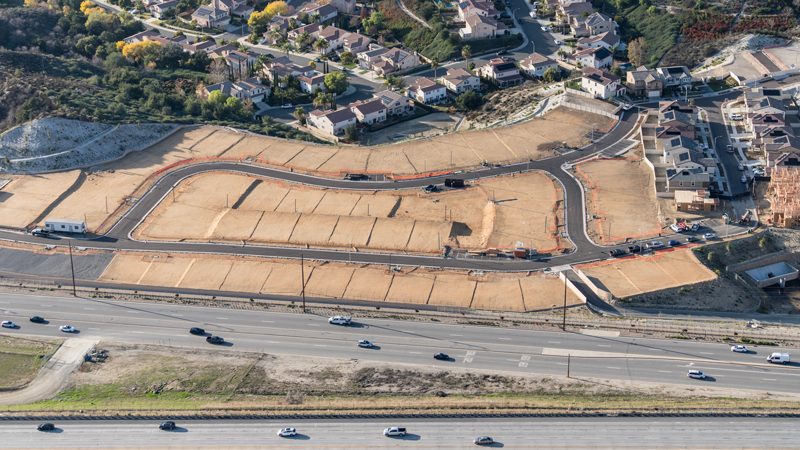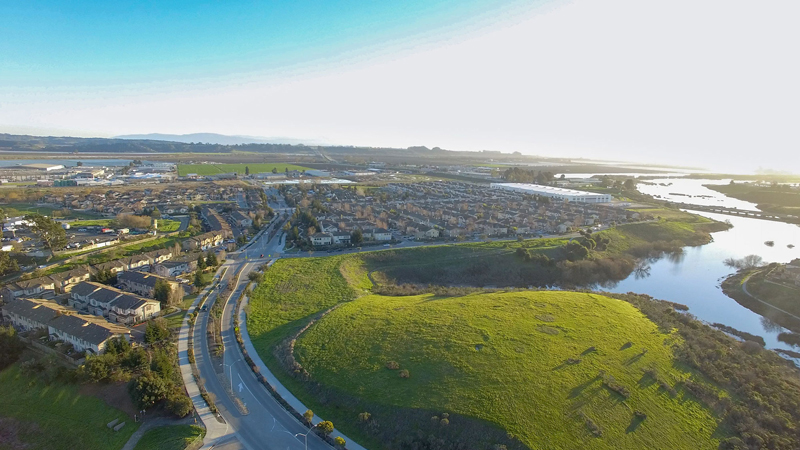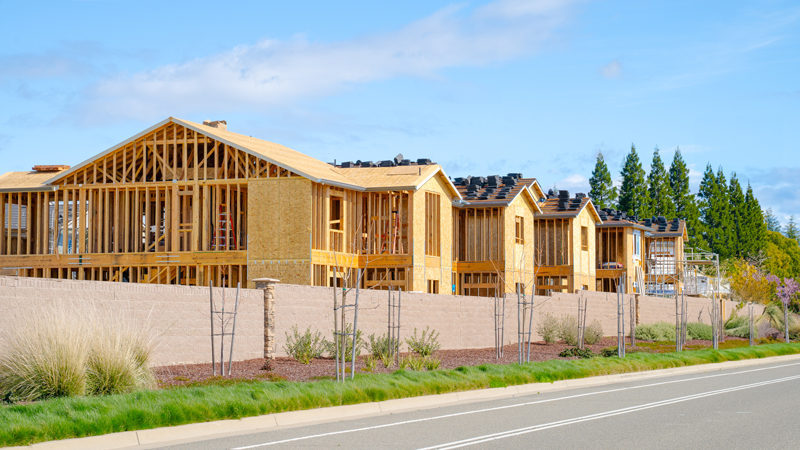Blogpost
23.1 minute read
November 18, 2025
California’s ongoing efforts to modernize the California Environmental Quality Act (CEQA) reached a new milestone in mid-2025. Governor Gavin Newsom signed into law two significant CEQA reform bills – Assembly Bill 130 and Senate Bill 131 – as part of the state’s broader strategy to expedite housing development and critical community infrastructure. These bills, chaptered on June 30, 2025 (with immediate effect), build on prior CEQA reform initiatives and reflect a pragmatic approach: streamlining environmental review for projects that align with state housing and infrastructure goals.
The reforms are especially relevant to California public agencies (cities, counties, special districts) tasked with approving or undertaking such projects, though private developers and infrastructure planners will also benefit from the clearer, faster processes. Notably, unlike some earlier streamlining laws, these measures impose no new affordable housing mandates or labor requirements on typical projects—removing common hurdles that have slowed development. Below is a high-level summary of the new CEQA provisions in AB 130 and SB 131, and their potential impact on project approvals.
AB 130 – Expanded CEQA Exemption for Infill Housing Development
AB 130 (a budget trailer bill focused on housing) introduces a new statutory CEQA exemption for qualifying “infill” housing projects. In essence, many urban housing developments that meet specified criteria can now be approved without undergoing CEQA, substantially shortening the approval timeline. This exemption aims to remove barriers to building much-needed housing in existing urban areas – a key strategy to address California’s housing shortage.
Key Features of AB 130’s Infill Housing CEQA Exemption:
- Larger Project Sites Eligible: Housing developments on sites up to 20 acres in size can be exempt from CEQA review (a substantial expansion from prior infill exemptions). Exceptions are “builder’s remedy” projects proceeding under Housing Accountability Act violations are capped at 5-acre sites for this CEQA relief.
- Urbanized Location: The project site must be in an incorporated city or an urbanized area as defined by the U.S. Census. In other words, the exemption is reserved for infill projects in urban settings, not greenfield development on the urban fringe.
- Infill Criteria: The site should qualify as infill, meaning it’s either previously developed or substantially surrounded by urban development. For example, at least 75% of the site’s perimeter or the surrounding 1/4-mile area must be developed with urban uses (residential, commercial, institutional, etc.). This ensures the exemption applies only in established urban fabric, excluding projects in rural open space or sensitive natural areas (the law explicitly requires that all sites meet SB 35’s eligibility rules – farmland, wetlands, and habitat conservation lands are off-limits).
- Consistency with Local Plans: The housing project must be consistent with the local general plan and zoning in effect for the site. If there’s a discrepancy between the general plan and zoning designations, consistency with either one suffices for eligibility (and deviations allowed under the State Density Bonus Law do not disqualify a project). This condition means the exemption only covers projects that already fit within a jurisdiction’s adopted planning framework.
- Minimum Housing Density: The project must meet a minimum density requirement, generally equating to 10 units per acre in suburban areas and 15 units per acre in urban areas.
- Avoids Environmentally Sensitive Areas. The project may not be located in sensitive areas of the Coastal Zone, prime farmland, wetlands, Very High Fire Hazard Severity Zones, hazardous waste sites, delineated earthquake fault zones (without additional seismic standards), special flood hazard areas (without meeting additional federal criteria), regulatory floodways, areas subject to a community conservation plan or conservation easement, or habitat for protected species (this language comes from SB 423 [formally SB 35]).
- Historic Preservation. The project must not require the demolition of a historic structure that was registered on a national, state, or local register prior to the developer submitting a project application.
- No Hotels. No portion of the project may be designed and used as a hotel, motel, bed and breakfast, inn, or other transient lodging.
- No Added Affordability Requirement: Unlike some previous streamlining laws (such as AB 2011 or SB 35), AB 130 does not impose any Below Market Rate (BMR) affordable housing mandate as a condition of using the CEQA exemption. Developers are not required by this statute to include a certain percentage of affordable units (though they still must comply with any local inclusionary zoning obligations). This makes the exemption more accessible to a wide range of housing projects, not only those with subsidized units.
- Labor Standards: Most projects under 85 feet tall face no new labor or wage requirements to qualify. This is a notable difference from some other housing streamlining programs. However, if a project exceeds 85 feet in height, it must meet similar labor provisions to SB 35/SB 423—meaning construction workers must be paid prevailing wages, and if certain bidding conditions are met, a “skilled and trained” workforce must be used. Additionally, any 100% affordable housing development must pay prevailing wages regardless of height, and large projects in San Francisco (50 or more units) are subject to higher local labor standards. These labor conditions ensure larger or particularly impactful projects provide fair wages, while typical mid-rise infill projects can proceed without additional state-imposed labor hurdles.
- Tribal Consultation & Approval Timeline: To qualify for the exemption, the lead agency must engage in early consultation with any California Native American tribe traditionally affiliated with the area, similar to the process under AB 52 (tribal cultural resources) but with firm deadlines. The city or county must invite tribes to consult within 14 days of the application being deemed complete. If no tribe requests consultation within 60 days, consultation is deemed concluded. If a tribe does request it, the process must conclude within approximately 135 days. Once this consultation window closes (or sooner if tribes agree), the agency then has a strict 30-day deadline to act to approve or disapprove the project. This newly imposed timeline is a significant change—it forces a decision within 30 days after consultation, preventing projects from lingering in a CEQA holding pattern. Previously, under the Permit Streamlining Act, an agency’s shot-clock for action didn’t start until CEQA review was finished. Now, with CEQA essentially removed for these projects, and a statutory deadline in place, local governments are pushed to make prompt decisions on qualifying housing proposals.
- Environmental Site Safety Measures: The exemption doesn’t mean carte blanche on environmental protection. Projects must perform a Phase I environmental site assessment for hazards and if any recognized contamination is found, a Phase II assessment and appropriate remediation are required as conditions of approval. Furthermore, if the housing will sit near a freeway (within 500 feet), the building must incorporate enhanced air filtration and ventilation systems to protect residents from traffic emissions and cannot include balconies facing the freeway. These provisions import mitigation measures typically addressed in CEQA directly into the project’s conditions for the sake of public health and safety, even as the project skips formal CEQA documentation.
Additionally, AB 130 includes a freeze on the adoption of new state residential building standards through June 2031 (with exceptions for emergency, fire, or water conservation updates). This provides greater regulatory certainty for housing developers during the implementation window.
Strength and Practical Effect of the Exemption
AB 130’s infill housing exemption is a statutory exemption, which gives it a firmer legal foundation than the often-used Class 32 categorical exemption for infill development. Statutory exemptions are established by the Legislature and, crucially, are not subject to the usual “exceptions” that can disqualify categorical exemptions (for instance, the “unusual circumstances” exception that CEQA opponents may invoke to initiate an EIR). Courts have consistently upheld agencies’ use of statutory exemptions as long as the project meets all the criteria. In practice, this means if a city or county determines a project fits AB 130’s parameters, that decision is more legally defensible against CEQA challenge than a categorical exemption determination would be.
For public agencies, AB 130’s CEQA exemption for infill housing projects could be a game-changer in accelerating housing approvals. City and county planning departments can process qualifying development applications with ministerial or streamlined local review only, bypassing the EIR/negative declaration process. This will likely shave months or even years off the timeline for mid-size and larger urban housing projects. It also greatly reduces litigation risk—a CEQA lawsuit often stalls projects, but an exempt project is far less vulnerable on environmental procedural grounds. The new 30-day decision deadline adds further certainty and urgency. Once a qualifying project application is in and tribal consultation (if any) is wrapped up, an agency must act quickly, reducing the chance of delays.
From a policy perspective, AB 130 aligns with California’s push to promote urban infill and transit-oriented development. By removing CEQA hurdles, the law incentivizes developers to focus on sites within city boundaries that already have zoning for housing. Mixed-income and affordable housing projects stand to benefit as well, since CEQA-related costs (which can particularly burden non-profit housing developers) are minimized. In short, cities and counties may find it easier to meet their state-mandated housing targets (RHNA goals), since projects that conform to adopted housing plans can move forward expeditiously. Agencies will need to carefully verify that each project truly meets all the criteria above – the lead agency remains responsible for determining exemption eligibility – but once confirmed, the path to approval is much more straightforward.
The reforms also establish a new CEQA Vehicle Miles Traveled (VMT) Mitigation Bank, which allows developers to satisfy transportation mitigation obligations by funding affordable housing and location-efficient infrastructure projects.
SB 131 – New CEQA Exemptions for Community & Infrastructure Projects, Plus Streamlined Review Provisions
SB 131 is another expansive trailer bill that enacts several CEQA modifications, aimed at facilitating community-serving projects and refining the scope of environmental review. Where AB 130 centered on housing, SB 131’s provisions touch on infrastructure like child-care facilities, health clinics, water systems, parks, and also introduce new rules for how CEQA applies to certain housing projects that almost qualify for exemptions. Below are the highlights most pertinent to public agencies:
Community-Serving Projects Exempt from CEQA
SB 131 creates new statutory CEQA exemptions for certain community facilities and other beneficial projects, recognizing that these developments provide broad public benefits with minimal environmental harm. The law lists specific project types that are now exempt by statute (as long as they are not on environmentally sensitive sites):
- Child Care Centers: Projects consisting exclusively of a day care center (childcare facility) are exempt from CEQA, provided the site is not in a strictly residential zone. This should ease the approval of new child-care or preschool facilities (which are often located in commercial or mixed-use areas) by removing CEQA documentation costs.
- Small Health Clinics: Projects for health care clinics – specifically federally qualified health centers or rural health clinics – under 50,000 square feet are exempt. These community clinics, which provide essential medical services (often in underserved areas), can now be established or expanded without CEQA, as long as they remain below the size threshold.
- Nonprofit Food Banks/Pantries: A project to build or expand a nonprofit food bank or food pantry facility is exempt, if it is located on a site zoned industrial. Many food banks require warehouse-style spaces; with this exemption, a qualifying food distribution warehouse serving the community won’t trigger CEQA so long as it’s in an appropriate industrial area.
- Advanced Manufacturing Facilities: Projects for facilities engaged in advanced manufacturing (as defined in state code) are exempt when on land zoned exclusively for industrial uses. “Advanced manufacturing” can include high-tech and clean-tech production—from electric vehicle components to biotech or semiconductor facilities. By limiting the exemption to industrially zoned sites, the law ensures these potentially job-creating projects occur in proper zones, while still bypassing CEQA reviews.
- Farmworker Housing: New agricultural employee housing projects, as well as projects consisting exclusively of repair or maintenance of existing farmworker housing, are now exempt from CEQA. This exemption provides relief for rural communities and agricultural operations seeking to build or improve housing for farm laborers. Notably, agricultural employee housing is often already subject to special permitting processes; this law removes the additional CEQA layer, streamlining the creation of safe, affordable dwellings for farm workers (an urgent need in California’s farm regions).
Importantly, none of the above exemptions apply if the proposed project site is on “natural or protected lands,” as defined in CEQA. In other words, if a project would be built on protected open space, wetlands, habitat conservation land, or similar sensitive areas, the exemption is off the table. This caveat maintains environmental safeguards even as the state fast-tracks community-oriented development. Public agencies can thus confidently apply these exemptions to eligible projects, knowing that truly sensitive sites are excluded by definition.
These new statutory exemptions should be welcome news for cities, counties, and special districts. For example, a city planning to construct a new childcare center or a county looking to approve a nonprofit’s food bank facility can do so more quickly and with lower costs. Removing CEQA from the equation for these small projects saves staff time and avoids the risk of lawsuits delaying a much-needed public service. It’s a targeted approach – focusing on projects with clear social benefits and presumably minimal environmental footprint – consistent with the Legislature’s intent to remove unnecessary hurdles to community improvements. Similarly, rural counties can expedite farmworker housing or health clinics knowing they won’t face CEQA litigation on those fronts. (Agencies should still document that the project meets the criteria and is not on a sensitive site, as the lead agency remains responsible for determining the exemption’s applicability.)
Streamlined CEQA for Water, Parks, and Climate Resilience Projects
Beyond community facilities, SB 131 extends and expands various CEQA exemptions for infrastructure and environmental resilience projects. Public agencies involved in water supply, parks, and climate-related work should take note of these changes:
- Safe Drinking Water Projects (Disadvantaged Communities): CEQA exemptions for certain small-scale water system improvements were extended to 2032 and broadened in scope. Previously, projects benefiting a small disadvantaged community water system were exempt until 2028 if they met specific criteria (and did not affect wetlands or sensitive habitat). SB 131 extends this sunset to January 1, 2032, and explicitly adds projects that provide sewer service to disadvantaged communities with failing septic systems into the exempt category. For instance, a county sanitation district connecting homes on inadequate septic tanks in a disadvantaged rural community to a sewer line may now do so under a CEQA exemption. This extension gives agencies more time and clarity to complete vital water infrastructure upgrades in low-income areas.
- Climate Resilience Water Projects (Non-Construction): New through 2030: SB 131 creates a temporary exemption (until January 1, 2030) for certain community water system projects that boost climate resiliency, biodiversity, or sensitive species recovery – provided these projects involve no construction activity. In practice, this might cover actions like planning or environmental restoration efforts funded by state grants that improve water supply resilience or ecosystem health without physical construction (e.g., groundwater recharge planning or habitat acquisitions for watershed protection). The project must result in long-term net environmental benefits and include protective measures in its design. By exempting such projects, the law encourages agencies to pursue innovative climate adaptation strategies quickly, as long as they aren’t doing ground-disturbing work that could itself cause impacts.
- Wildfire Risk Reduction: SB 131 declares that wildfire fuel reduction projects are exempt from CEQA. This includes activities like prescribed burns, forest thinning, creating defensible space around communities, and constructing fuel breaks to reduce wildfire hazards. Given the urgency of wildfire prevention in California, this provision empowers fire districts, counties, and land managers to implement hazard mitigation projects without environmental reviews. The exemption is expected to speed up projects that protect communities from catastrophic fires, while still requiring those projects to incorporate best practices (under other laws) to avoid unintended ecological damage.
- Public Parks and Trails: The law exempts from CEQA any activity or approval necessary for the planning, design, acquisition, construction, or operation of new public park facilities or non-motorized recreational trails, if those projects are funded by specified state or local resources. In short, if a city receives certain state grants to build a new park or bike/pedestrian trail, the steps to implement that project (from buying land to building the facilities) won’t trigger CEQA. This exemption can significantly streamline local park projects, allowing recreational amenities to be delivered to the community faster. Agencies should verify the funding source aligns with the law’s criteria (for example, the funding might need to be from a voter-approved park bond or other designated program), but this is a clear incentive to use state grant programs for park and trail development.
- Broadband in the Right-of-Way: An existing CEQA exemption for linear broadband deployment (e.g., laying fiber-optic cable) was expanded by SB 131 to include projects in local street or road rights-of-way. Previously, CEQA law already exempted broadband lines in highway rights-of-way; now cities and counties can permit new broadband infrastructure along local roads without CEQA review. As the state pushes to close the digital divide, this helps fast-track broadband installations at the local level, since digging a trench or attaching cable to poles in an already-developed road corridor is now categorically exempt.
- State Climate Strategy Updates: SB 131 also exempts updates to California’s Climate Adaptation Strategy from CEQA. While this pertains to a state-level policy document (not a physical project), it’s part of the broader theme: planning efforts that guide climate resilience, by themselves, should not be slowed down by CEQA analysis. This reflects the Legislature’s view that timely action on climate planning is crucial and such high-level strategy updates won’t in themselves harm the environment (and indeed are meant to improve long-term outcomes).
Other Provisions
For completeness, SB 131 contains additional specialized CEQA provisions not detailed at length here – for example, exemptions for certain high-speed rail facilities (the development or improvement of maintenance facilities and station modifications for electrified high-speed rail, under specified conditions). It also directs the new Office of Land Use and Climate Innovation to map “eligible urban infill sites” statewide by 2027, to inform future streamlining efforts. These items, while noteworthy, are narrower in scope for most local agencies.
Focused CEQA Review for “Near-Miss” Housing Projects
One of the most significant procedural reforms in SB 131 is a change in how CEQA is applied to certain housing projects that almost qualify for an exemption. In the past, if a project failed to meet all conditions of a CEQA exemption or categorical exemption, it would lose the exemption entirely—often initiating a full EIR even if only one minor aspect disqualified the project. SB 131 changes this by adding a “focused review” rule for near-exempt projects:
- If a proposed housing development project would be exempt under a statutory exemption or specific categorical exemption but for a single disqualifying condition, then the lead agency’s CEQA analysis must be limited solely to the environmental effects caused by that single condition. In other words, the CEQA review cannot go broad, it should only study the particular issue that made the project ineligible for the full exemption. For example, if a 100-unit infill apartment project that qualifies under the CEQA infill exemption except that it would demolish one old structure that might be historic. Under the new law, the CEQA evaluation would be narrowed just to the potential historic resource impact (the single problematic condition), rather than a full-spectrum analysis of traffic, noise, air quality, etc., that would normally be required for a non-exempt project. This applies to both initial studies and EIRs – their scope is curtailed to only those effects caused solely by the condition that broke the exemption.
- Furthermore, any Environmental Impact Report (EIR) done under this focused review need not discuss project alternatives or the project’s growth-inducing impacts. These are often extensive sections of a traditional EIR. The logic is that if a project is fundamentally sound and in line with CEQA exemptions aside from one quirk, there’s little value in analyzing completely different alternatives or speculative growth effects. The law essentially streamlines the documentation to only what’s relevant to the exemption condition at hand.
- There are sensible limits: SB 131’s near-miss streamlined review does not apply if a project misses the exemption on more than one condition, or if the project is of a type fundamentally outside the scope of the exemption (the statute says “not similar in kind” to typical qualifying projects). Also, the focused review is unavailable if the project includes a distribution center or oil and gas infrastructure, or if it is located on natural or protected lands (e.g. in a wilderness or conservation area). These exceptions prevent abuse of the rule for projects that have multiple significant issues or are of a type the state considers inappropriate for fast-tracking. But for many typical infill housing proposals—which might hit just one snag like slightly exceeding a height limit or a minor inconsistency requiring a variance – this could be a powerful tool to avoid “all-or-nothing” CEQA outcomes.
For public agency staff and decision-makers, this focused review mechanism is a welcome relief. It provides a clear mandate to right-size CEQA studies. Agencies can save resources by tailoring environmental documents to only the pertinent issues, and project sponsors may be less inclined to abandon or downsize projects due to CEQA fears if they know only a single-issue analysis is required. In practice, we may see more negative declarations or mitigated negative declarations instead of full EIRs, or much shorter EIRs, when a housing project just narrowly misses an exemption. This translates to faster approvals and fewer points of legal challenge, since additional analysis (and its potential flaws) will be minimized. Essentially, SB 131 curbs the situation where one small CEQA-triggering factor turns into a multi-year review.
Other Notable CEQA Process Changes
SB 131 also includes a provision to streamline CEQA litigation and record-keeping, which is of interest to agencies that frequently find themselves assembling administrative records for court. The law now excludes staff notes and internal agency communications from the CEQA record of proceedings (such as internal emails, memos, and deliberative notes), except for projects that include a large distribution center or oil/gas facility. Previously, all those internal communications could become part of the record in a lawsuit, which is burdensome to collect and can limit frank discussion. With this change, unless the project is in one of the excluded categories, agencies will not have to produce most internal staff communications in the event of a CEQA challenge—a modest but meaningful reduction in paperwork, liability, and legal “gotcha” moments. This aligns with a broader effort to raise the relevancy standard for what goes into an administrative record, thereby shortening the record and focusing on materials that directly informed the decision.
Another noteworthy reform concerns local land use planning: rezoning actions needed to implement updated Housing Elements are now exempt from CEQA. Many cities and counties are required to rezone land for higher-density housing as part of their state-mandated Housing Element (the plan to meet regional housing needs). SB 131 (in conjunction with AB 130) removes the environmental review for such rezonings if the Housing Element was already analyzed under CEQA. In other words, when a jurisdiction upzones properties to accommodate its RHNA (Regional Housing Needs Allocation) after adopting a new Housing Element, that rezoning no longer triggers CEQA, provided the Housing Element’s EIR covered the broader impacts. This reform is a significant relief for local governments, as it prevents delay in implementing housing plans. Cities can make zoning changes to enable more housing without initiating a new CEQA process each time. It addresses a common bottleneck in the housing approval pipeline by ensuring that once a Housing Element’s vision is vetted, the follow-up zoning is not delayed by environmental analysis. Of course, if a rezoning goes beyond what was contemplated in the Housing Element EIR, further analysis might be needed, but the law encourages consistency and streamlining.
Conclusion and Implications
The 2025 CEQA reforms under AB 130 and SB 131 represent a significant shift toward expediting projects that advance California’s housing and infrastructure objectives. Public agencies will likely find these tools invaluable in the coming years. Housing elements and infill development programs will be easier to implement now that many urban housing projects can avoid CEQA entanglements entirely. Community infrastructure and resilience projects—from child care centers and clinics to water system upgrades, wildfire mitigation, broadband, and parks—can proceed with fewer procedural delays, allowing local governments to respond more nimbly to public needs. At the same time, key safeguards (like historic preservation, tribal consultation, and the exclusion of sensitive environmental sites) remain in place, preserving CEQA’s core purpose of environmental protection where it matters most. For projects that qualify for exemptions, it remains important to evaluate eligibility carefully and address requirements for technical studies, permitting, and resource compliance—ensuring each project is successful and defensible under the new CEQA rules.
City and county officials, as well as planners and developers, should familiarize themselves with the details of these new laws to fully leverage the benefits. For instance, determining early whether a proposed housing development meets the AB 130 exemption criteria, or whether a planned community facility falls under SB 131’s categories, will help chart the fastest lawful path to approval. In many cases, these reforms will shift staff effort from preparing lengthy CEQA documents to ensuring compliance with objective standards and special conditions (e.g. labor rules or on-site mitigations). A trade-off that can lead to more “yes” votes on projects in shorter time. Agencies are also advised to update their internal CEQA procedures and train staff on the new timelines (such as the 30-day post-consultation deadline) to avoid inadvertent non-compliance with the expedited processes.
Overall, AB 130 and SB 131 continue the recent trend of the Legislature refining CEQA to better balance environmental review with urgent state priorities like housing affordability, climate resilience, and public infrastructure. By streamlining CEQA for “good” projects, California is empowering its public agencies to deliver results more efficiently. As always, agencies should consult the full text of the new statutes for specifics and coordinate with legal counsel or CEQA experts as needed when applying these provisions. Both bills contain additional nuances and reforms beyond the scope of this summary, such as modifications to how transportation impacts are analyzed and other technical adjustments. But the intent is clear: to cut red tape for the projects Californians most need, while upholding essential environmental protections.
As California’s regulatory landscape evolves, ongoing education and clear communication will be essential for agencies and their partners to remain proactive, informed, and ready to guide projects under these new CEQA provisions. As always, Harris is here to help and partner with you to navigate these changes, answer questions, and support your projects from planning through implementation.
Full Texts of 2025 CEQA Reform Legislation
For those interested in the statutory language, the complete text of SB 131 (2025) and AB 130 (2025) is available on the state Legislature’s website. These documents provide the fine details and context for each section summarized above. Public agencies in California and anyone involved in development projects would be well served to review these laws and update their CEQA practices accordingly, as the state continues to encourage a more efficient, targeted environmental review process in line with its policy goals.



